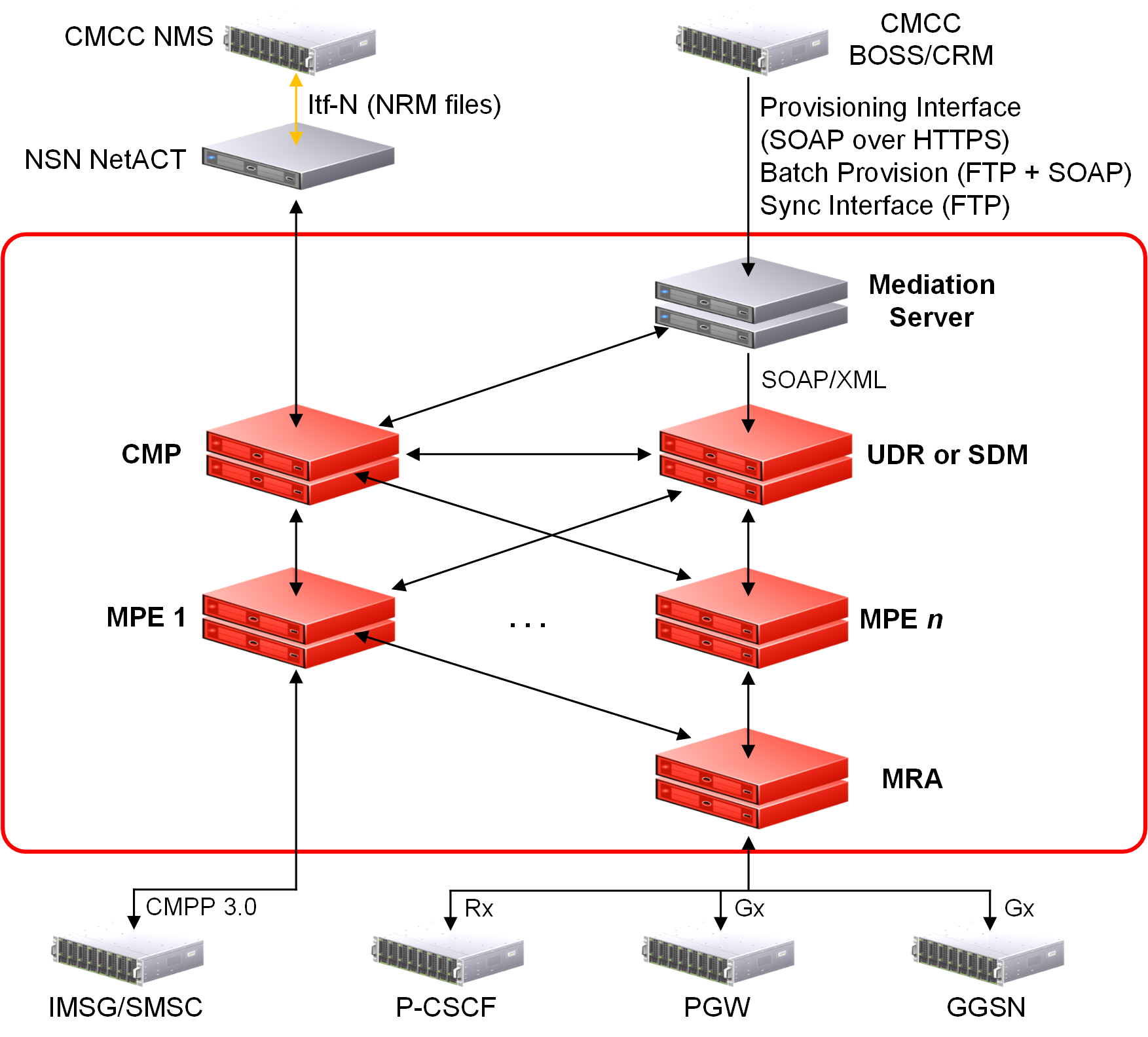
Integration with the CMCC Network Management System
The CMP system integrates with the CMCC Network Management System (NMS) through the Nokia Siemens Network (NSN) NMS, referred to as NetAct.
- Performance Management
The CMP system generates performance statistics and sends the statistics files to NetAct using FTP.
- Fault Management
The CMP system relays alarm information from the SPR and hardware.
- Configuration Management
The CMP system generates and supports static and dynamic information for Network Resource Management (NRM) and uploads the NRM statistics files to NetAct using FTP.
Integration with the CMCC BOSS System
- Initial SPR data provisioning
The mediation server processes the initial subscriber data provisioning file issued by the CMCC BOSS system.
- SPR provisioning
The mediation server processes the request and response between the CMCC BOSS system and either the Oracle Communications User Data Repository (UDR) or the Oracle Communications Subscriber Database Management (SDM) system.
- Data consistency checking
The mediation server processes data consistency checks between the CMCC BOSS and SDM systems. After the check is complete, the mediation server generates full or incremental SPR data by time frame or MSISDN prefix and sends the SPR data file to the BOSS system using FTP. The BOSS system compares the data and returns a conflict results file. The mediation server can resolve the conflict by modifying the SDM.
The mediation server is configured using the CMP GUI. See Managing Mediation Servers for more information.
Interaction with the Short Message Service Center
The China Mobile Peer to Peer (CMPP) interface can be used when submitting short messages to the subscriber through the Short Message Service Center (SMSC).
Messages over 140 characters are automatically segmented by the Multimedia Policy Engine (MPE) device and re-assembled by the receiving device. The maximum segmentation length is 255 characters.
The CMPP mode is set from the Mode page of the CMP system. See About Mode Settings. The CMP system is then used to create the CMPP profile and push the profile to the SMS Relay (SMSR). The SMSR uses the CMPP profile to establish a connection to the SMSC. See Configuring an SMS Relay for information on creating a CMPP profile and setting the SMSR and CMPP logs.
CMPP policies are pushed to the MPE devices and are used to trigger requests for submitting short messages when executed. The SMSR configuration is also pushed to the MPE devices and is used as the destination of the requests in MPE devices. The SMSR, in communication with the SMSC, constructs and sends the submit messages to the SMSC and receives the delivered messages from the SMSC following the CMPP specification.
A CMPP client is configured on the CMP system and added to the SMSR. The CMPP client can connect to the SMSC and send and receive CMPP messages. CMPP messages of greater than 160 octets are sliced when being sent to the SMSC and re-formed into one message at the SMSC.